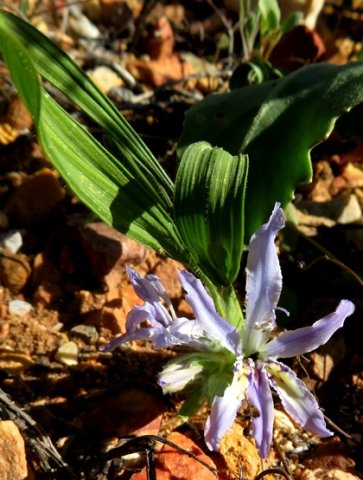Babiana

Author: Ivan Lätti
Photographer: Thabo Maphisa
Babiana is a genus of cormous perennials in the Iridaceae or Iris family. The deciduous plants grow annual above-ground parts, leaves, stems and flowers from their perennial, globose corms that root below. The corm tunics consist of fibrous or leathery layers. Stems may be underground or above, branched or not, usually hairy and sometimes sheathed at the base like a neck in a collar. Most species are winter growing and spring flowering.
The leaves are sword-shaped or wedge-shaped, the blades pleated and often hairy, lacking definite midribs. The margins are entire. The lower two or three are not normal leaves but small cataphylls.
The stalkless flowers grow in two opposite ranks, secund (all on one side), or in spiralling spikes. The bracts vary in length. The outer bracts are often partly dry, the inner ones may be split to the base or forked. The corollas are long- or short-tubed. The corollas are either radially symmetrical, funnel-shaped bowls or two-lipped. The flowers are often sweetly fragrant. Blue or mauve flowers are common, white, red, pink, cream or yellow are less so. The stamens cohere in an arch or are symmetrically arranged. The ovaries are in some cases hairy, the branched styles exserted in some species.
The fruit capsules are globose to oblong, sometimes hairy. The seeds are globose, often shiny, the funicles inflated.
There are about 86 Babiana species, all in southern Africa as far north as Zambia and most of them in the west and southwest of South Africa. The Babiana name association with baboons relates to the animals proclivity for consuming the corms, the plants consequently often adapted to stony conditions where the corms are deep underground or wedged among rocks. People also used to eat the corms of certain species.
The plant in picture may be Babiana mucronata (Leistner, (Ed.), 2000; Manning, 2009; iNaturalist; Wikipedia; www.pacificbulbsociety.org).

